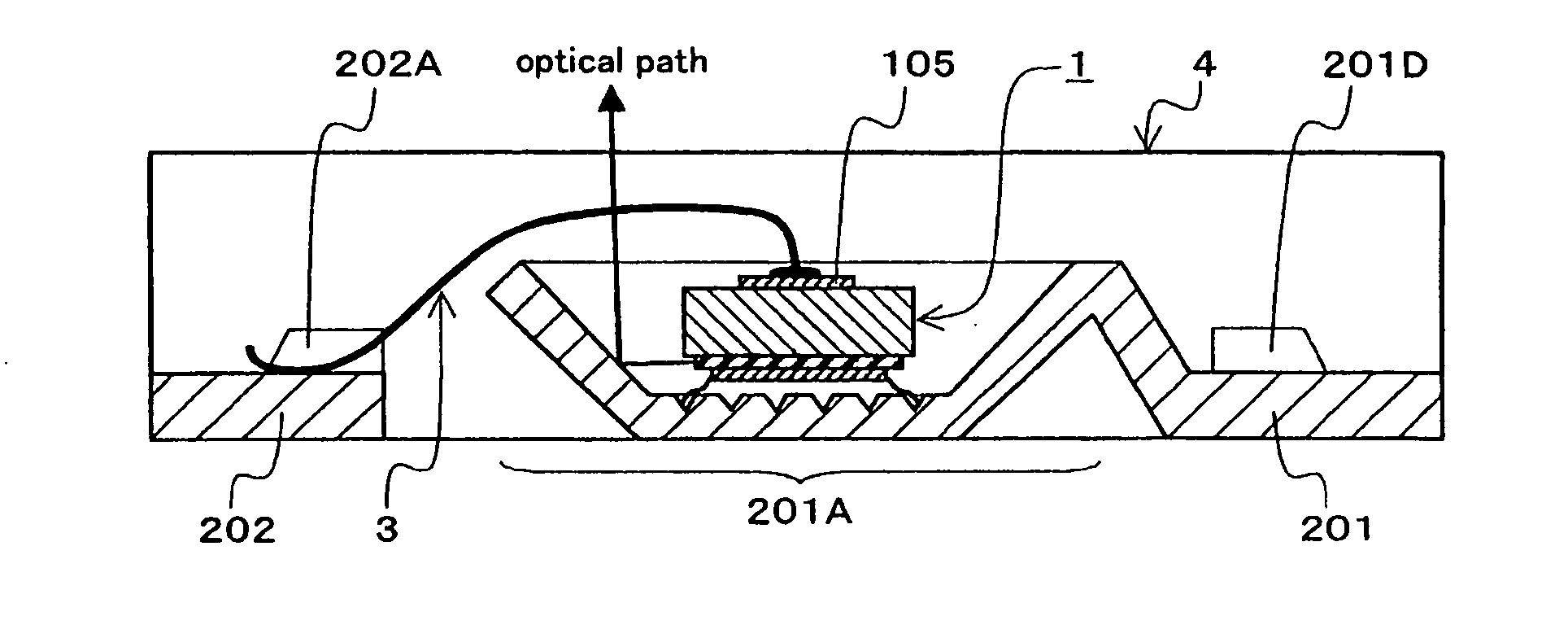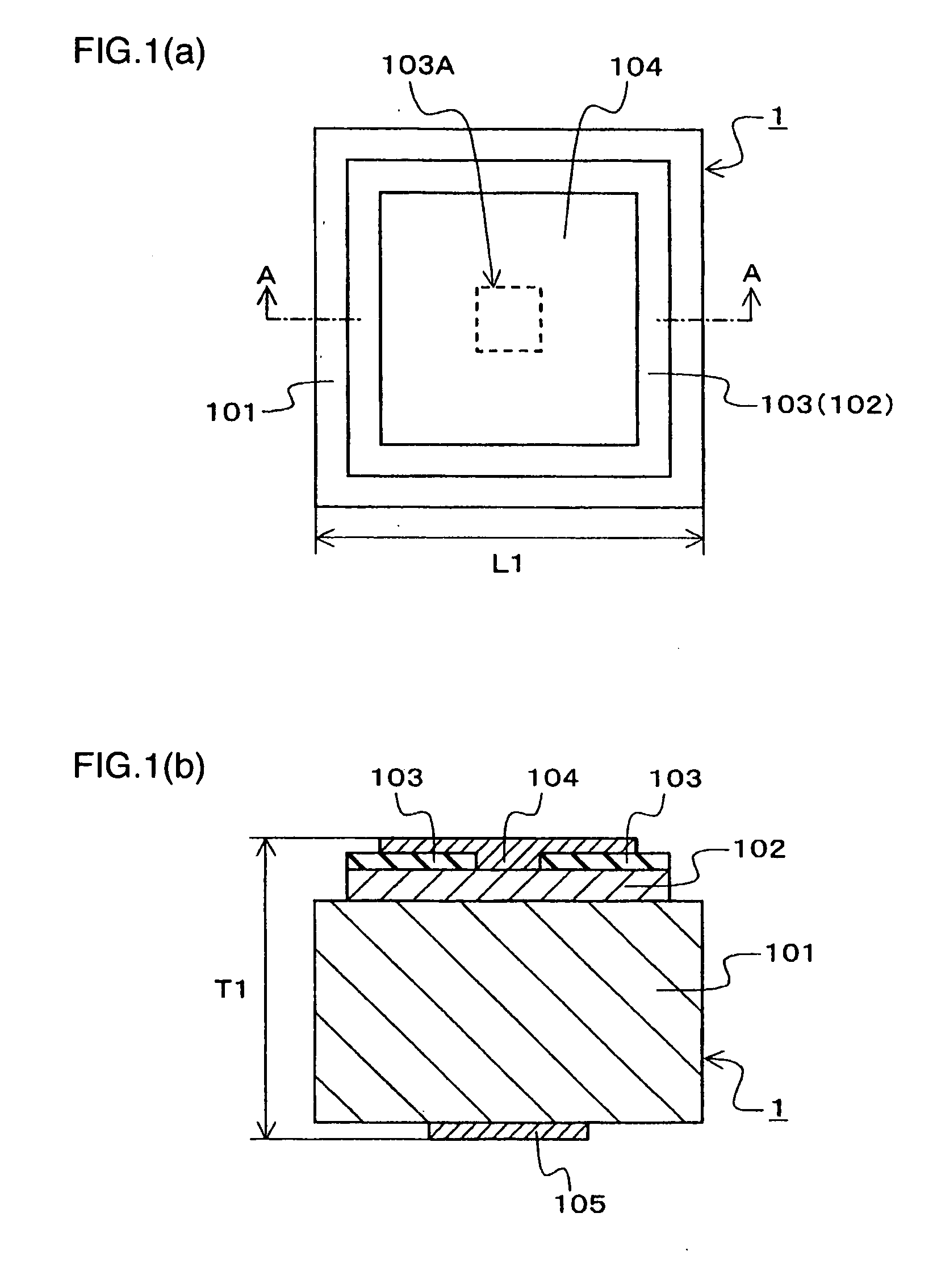Light-Emitting Device Manufacturing Method and Light-Emitting Device
a technology of light-emitting devices and manufacturing methods, which is applied in the direction of semiconductor lasers, semiconductor/solid-state device details, semiconductor laser structure details, etc., can solve the problems of light-emitting efficiency sometimes being lowered, light-emitting layer damage, etc., to reduce the amount of joining materials, reduce the spread of joining materials, and efficiently exhaust air or gas presen
- Summary
- Abstract
- Description
- Claims
- Application Information
AI Technical Summary
Benefits of technology
Problems solved by technology
Method used
Image
Examples
embodiments
[0055] FIGS. 3(a), 3(b), 3(c), 4(a), 4(b), and 4(c) are schematic views showing general constitutions of a light-emitting device according to the embodiment of the present invention; FIG. 3(a) is a plan view of a light-emitting device as viewed in a light-emitting direction; FIG. 3(b) is a cross-sectional view along B-B line in FIG. 3(a); FIG. 3(c) is a magnified cross-sectional view of the joining part of the first electrode of a light-emitting element and the first lead; FIG. 4(a) is a plan view showing a constitution of an element mounting part of the first lead; FIG. 4(b) is a cross-sectional view along C-C line in FIG. 4(a); and FIG. 4(c) is a sectional view along D-D line in FIG. 3(a).
[0056] In each of FIGS. 3(a), 3(b), 3(c), 4(a), 4(b), and 4(c), 201 is the first lead, 201A is an element mounting part, 201B and 201C are grooves, 201D is a protruding portion as preventive measures for dropping, 202 is the second lead, 202A is a protruding portion as preventive measures for dr...
PUM
 Login to View More
Login to View More Abstract
Description
Claims
Application Information
 Login to View More
Login to View More - R&D
- Intellectual Property
- Life Sciences
- Materials
- Tech Scout
- Unparalleled Data Quality
- Higher Quality Content
- 60% Fewer Hallucinations
Browse by: Latest US Patents, China's latest patents, Technical Efficacy Thesaurus, Application Domain, Technology Topic, Popular Technical Reports.
© 2025 PatSnap. All rights reserved.Legal|Privacy policy|Modern Slavery Act Transparency Statement|Sitemap|About US| Contact US: help@patsnap.com



